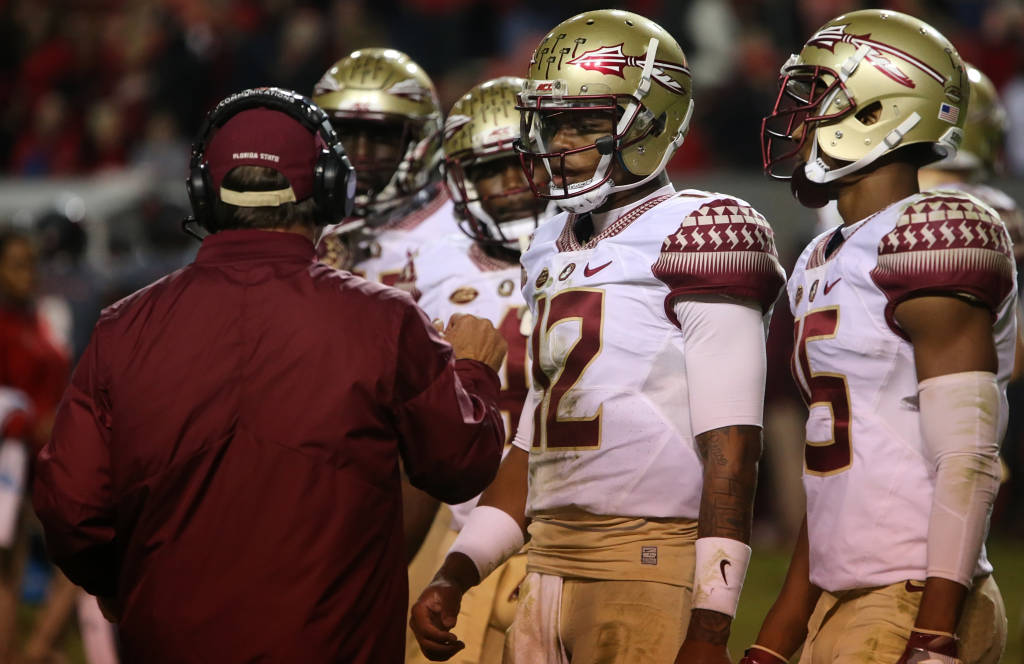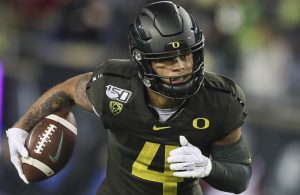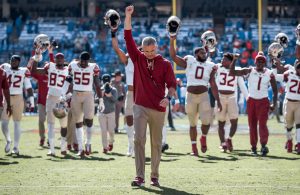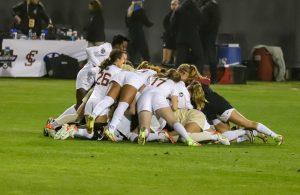- Sunday Seminole Summary: FSU Football Adds Pair of WR Transfers
- Sunday Seminole Summary: FSU Football Exits ESD With Top-15 Class
- Sunday Seminole Summary: FSU Soccer Tops BYU for Third National Championship
- Sunday Seminole Summary: FSU Soccer Advances to National Championship Match
- Seminole Sunday Summary: FSU Soccer Heads Back to College Cup
- Seminole Sunday Summary: FSU Soccer Reaches Sweet 16; Football Tops Boston College
- Seminole Sunday Summary: FSU Soccer Wins ACC, Advances to Second Round of NCAA Tournament; FSU Football Rallies Past Miami
- Seminole Sunday Summary: FSU Soccer Tops Wake on OT to Advance to ACC Final
- Seminole Sunday Summary: FSU Football Crushes UMass for Third Straight Win
- Seminole Sunday Summary: FSU Soccer Stays Perfect with Pair of Wins
How Do Second-Year Quarterbacks Progress Under Jimbo Fisher?
- By Clint Eiland
- Updated: May 25, 2017
 Damon Herota/FSU athletics
Damon Herota/FSU athleticsIt is safe to say that the 2016 season firmly entrenched Deondre Francois as the starting quarterback for Florida State going forward. After an injury to Sean Maguire helped Francois solidify the starting spot, the redshirt freshman was able to lead the Seminoles to a 10-3 season that included an Orange Bowl victory over Michigan and a top-10 finish.
Francois himself did pretty well when considering his youth and lack of actual experience. He generally did not make egregious mistakes, though he has clear weaknesses when it comes to pocket awareness and short-to-mid range accuracy. But for every downside there was an upside, and Francois’ potential has many thinking he could lead the offense once more to a top finish during the 2017 season.
Part of the reason for optimism is head coach Jimbo Fisher’s track record with quarterbacks. Fisher is generally known as a quarterback “guru” who has propelled multiple players to college football stardom and future NFL careers.
Without looking at any numbers, it is generally agreed upon that he helped massively improve players like Jamarcus Russell, Christian Ponder, and E.J. Manuel. While those three might not have done much at the next level, the fact that they were even given that opportunity was in large part due to Fisher. His track record speaks for itself.
This got us thinking: when looking at Fisher’s past results, what can be expected of Francois next season? Is there an actual pattern with Fisher’s past quarterbacks? To do this, we looked at all quarterbacks under Jimbo Fisher’s career as an offensive coordinator and head coach.
That spans from 2000, when he was with LSU, up until last season with FSU. There are five quarterbacks who recorded two straight years of starting under his coaching. We looked at six categories to determine each’s progression/regression in their second year: completion percentage, passing yards per game, adjusted yards per attempt, touchdown percentage, interception percentage, and passer efficiency rating.
Important to note: there is no situation perfectly identical to Francois’. Only one of the other five applicable quarterbacks were redshirted and only saw game time in their first year of starting. Nearly all of them had some sort of limited reps at the end of games or in place of an injured starter.
That includes Matt Mauck, Russell, Ponder, and Manuel, all to varying degrees. This muddies the waters a bit, as does the fact that some of them did not finish their first starting seasons due to injuries of their own.
Also keep in mind that looking at numbers in a vacuum can be tricky and misleading. They do not take into account changes in the players around the quarterback or the team itself. These numbers should not be treated as a guaranteed improvement or decline.
| Δ Comp. % | Δ YPG | Δ AY/A | Δ TD % | Δ INT % | Δ PER | |
| Mauck (02-03) | +15.5 | +81.5 | +1.0 | +0.9 | +2.4 | +29.4 |
| Russell (05-06) | +7.3 | +37.1 | +2.2 | +3.3 | -0.6 | +30.4 |
| Ponder (08-09) | +13.1 | +147.6 | +2.8 | -0.2 | -2.0 | +32.7 |
| Manuel (11-12) | +2.7 | +20.4 | +0.2 | +0.1 | -0 | +4.9 |
| Winston (13-14) | -1.6 | +10.7 | -3.8 | -5.0 | +1.3 | -39.3 |
| Average: | +7.4 | +59.46 | +0.48 | -0.18 | +0.22 | +11.62 |
We can derive a few conclusions from this table.
The first will come as a shock to many: Jameis Winston brings the whole group down. But there’s a reason for that.
Winston’s first season was extraordinary and is rarely seen on the college football level from a redshirt freshman. He tossed for over 4,000 yards and 40 touchdowns on his way to being Florida State’s third Heisman Trophy winning quarterback. His 2014 season was by comparison much less stellar.
It wasn’t a “bad” season compared to most other quarterbacks, but Winston clearly was not in 2013 form. Much of that probably has to do with the loss of a handful of his top receivers, as well as an offensive line that had no excuses to regress yet did so anyway. The point being, Winston markedly declined in multiple facets from his 2013 season.
The most relevant number in Deondre Francois’ case should be the completion percentage. Almost every single player listed improved their second year completion percentage by a considerable amount. The two outliers were Manuel and Winston. Winston’s deal is explained above, and Manuel has the same reasoning: he already had a pretty high completion percentage in 2011 (65.3 in fact). He was still able to improve that to 68 percent in 2012.
Francois sometimes struggled with routine passes last season and had noticeably lower percentages against better defenses. His accuracy has always been a question, and the 58.8 percent mark from 2016 shows that he has work to do in that area. But if past results are any indication, Francois will indeed improve in 2017. That’s good news for a receiving corps that will be relatively young and full of growing talent.
Other than that, the numbers show a general improvement as a passer. The lower touchdown percentage and higher interception percentage are a bit odd but the averages are not drastically high or low. Much of that can be linked to Winston. Just for visualization purposes, here is what the average would look like if you removed Winston.
| Δ Comp. % | Δ YPG | Δ AY/A | Δ TD % | Δ INT % | Δ PER | |
| Average: | +9.65 | +71.65 | +1.55 | +1.02 | -.05 | +24.35 |
The result is complete refinement in every area.
At the end of the day, every player is unique and will react to coaching differently. Improving on one’s stats can certainly look good, but it still does not actually indicate that a quarterback is leading his offense to its fullest potential.
One example under Jimbo Fisher? E.J. Manuel.
He improved as a passer and was a solid starter in 2012. Yet his limitations and weaknesses still meant that the Seminoles’ offense became a detriment at crucial times throughout the season. Some of the blame can be laid on Fisher, but Manuel’s NFL career would seem to suggest that he had already reached his ceiling.
Overall, Francois is in good hands as a quarterback under Fisher. The loss of some starters on the offensive side will require shuffling and perhaps some growing pains, but the track record before him provides optimistic news. If FSU wants to be in contention for the playoff in 2017, it will need Francois to capitalize on his opportunities.




You must be logged in to post a comment Login